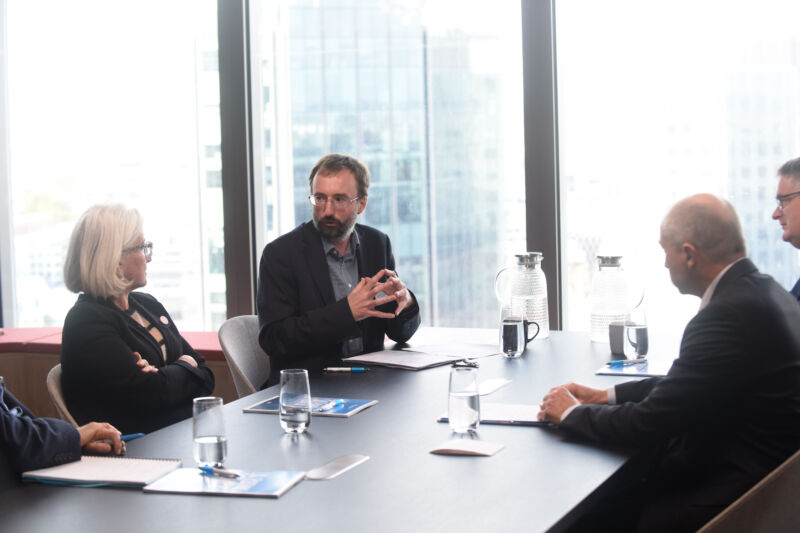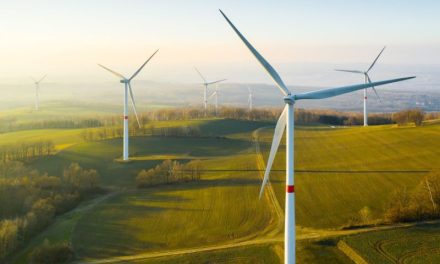Statkraft, described as Europe’s largest renewable energy generator, has launched its annual Low Emissions Scenario Report, which reveals the vital role renewable energy will play if the world is to come close to its 1.5-degree climate target.
Following the release of the UK Government’s Net Zero Strategy, outlining how the UK will deliver on its commitment to reach net zero emissions by 2050, it’s clear that renewables must be the core of our path forward.
At an event hosted at Statkraft’s London office to mark the launch of the report, leaders in climate science and policy gathered to discuss the issues. Key themes in the debate included: the areas requiring investment; how we need to focus on increased electrification to fundamentally transform the way we heat our homes and get around our roads; and how hydrogen is the highway required to help us reach our objectives and maintain stability.
The need for a fundamental shift in the investment landscape and the role that government should be taking to make it a reality quickly became apparent. Speaking at the event, political economist and author of the The Green New Deal, Ann Pettifor argued: “There’s so much more we need to do, and given the latest and disappointing government net zero strategy announcement, it is clear the political will required to make the transformation here and in the US still does not exist. The delusion persists that the private sector can undertake this transformation. The private sector is largely risk averse, and cannot transform the energy system without backing, compensation and guarantees from the state.”
She continued: “We must therefore work to change the narrative and make it acceptable for the state to take on a bigger role in the transformation, and in the creation of alternative transport, energy and land use systems. This is about changing the very dominant economic debate, which is that society must rely on private capital markets to allocate resources for transforming energy, for example. Instead, we must convince governments that it is the state that has to build alternative systems and frameworks, which will provide space for the private sector to innovate and take action.”
With comments today from the business secretary Kwasi Kwarteng, saying up to £90bn by 2030 of private investment would help the country to source more energy from renewables, Ann argued this simply isn’t enough. “We can’t reach the goals we need to reach without governments mobilising the kind of finance that was mobilised in 2020 during the COVID-19 outbreak. We should be talking in trillions, not billions.”
Yet, there’s more to be done to make the transition happen. As Hugh McNeal, former CEO of RenewableUK explained, “With the right regulatory environment and framework, combined with the fact that wind and solar are now so much better understood, there’s enough money to achieve the goals we need to reach. So rather than penalising and cutting off companies who are still active and investing in brown or ‘dirty’ assets, we must make the required regulatory changes and take them on the journey with us so we can transfer the vast tech and skills they have at their disposal to the energy transition. It’s clear steps here that will create the framework for the green future we all want and need to see.”
Commenting on the launch of the Low Emissions Scenario Report and during the high-profile discussion, Statkraft’s CEO Christian Rynning-Tønnesen said: “The greater appetite for action comes as the world has been called to arms, requiring us all to work in unison to slow the warming of our planet. It’s the mission of a lifetime, one that will define our generation. With the world slowly re-opening, so too are emissions returning to pre-pandemic levels, reinforcing our belief that the only way towards a 1.5-degree path is through the energy transition.”
He added: “Clearly, the scale of the challenge is underestimated while the speed of understanding has been too slow. This must change. We can’t wait as sea levels continue to rise and extreme weather reports continue to come in from all parts of the world. Instead, we must mobilise the global private sector to make the right investments now to start the energy transition in a way that’s scalable.”
The sixth annual Statkraft Low Emissions Scenario Report analyses the latest developments in the global energy markets to provide a foundation for its future investments. Its key findings, outlined below, shouldn’t be taken lightly and provide clarity on the urgent action required to set us on the path towards a 1.5-degree climate target.
The key findings showed:
GREEN INVESTMENTS: Growth in renewable energy is “unstoppable”
-
Green investments increased in 2020 despite the economic downturn caused by the pandemic. Investments in renewable power was 7% higher in 2020 than in 2019.
-
Renewable energy is already in most places cheaper than fossil fuels when investing in new capacity. Solar and wind technologies outcompete existing coal and gas power plants in more and more places.
-
Costs are on a declining trend. In general, for one euro invested in solar PV and wind today you get around four times the output compared to what you did ten years ago.
-
Solar power capacity will grow by a factor of 21, and wind power by a factor of 7 between today to 2050. Solar and wind power will supply about two thirds of the global power system.
-
Power demand more than doubles to 2050 and all this growth and more is covered by renewable power. Renewable energy will supply approximately 80% of the global power system in 2050.
Commenting on the role of renewables, Hugh McNeal added, “We shouldn’t be spending a lot of time on things which may or may not come true but which are theoretically possible. Instead, getting everyone to focus on and understand the scale of the challenge and dilemma are key. That conversation needs to shift in order for everyone – from government and the private sector to consumers across the world – to get behind a common goal of what needs to happen right now.” Clearly, energies must be focused on the proven technologies and solutions we already have to keep us on the path to coming close to the 1.5-degree climate target.
ELECTRIFICATION: Electrification cuts emissions locally and globally
-
Electrification is the main tool for cutting CO2 emissions. The share of electricity in final global energy demand will more than double to reach 47% in 2050.
-
Energy saved is the most environmentally friendly form of energy. Electricity is more effective than fossil energy sources in most applications. In for example heating up a house, a heat pump needs merely 1/3 of the energy compared to a gas boiler. The same goes for electric vehicles, that require approximately 1/3 of the energy fossil fuel vehicles require to go the same distance.
-
Emissions will be eliminated if the electricity originates from renewable energy sources. Electricity production from a gradually more renewable energy sector is the key to decarbonization in the Low Emissions Scenario.
-
2020 was a good year for electric vehicles. Global sales of battery-electric cars increased by 40%, even if total car sales fell.
-
The Low Emissions Scenario estimates that almost all new lighter vehicles will be battery-powered, while around half of new heavier vehicles will run on battery or hydrogen in 2050 worldwide.
As a macro economist, Ann Pettifor focused on the realities of making increased energy efficiency in Britain a reality, commenting: “One key area is increasing the energy efficiency of the British housing stock. This is something hugely labour intensive and an opportunity to bring all those talented people working across oil and gas – from architects to engineers – into the transition. We have over 30 million buildings requiring insulation in Britain alone. This should be viewed as an income and job generation activity and the onus is on the government to make it so.”
FROM 2 DEGREES TO 1.5 DEGREES: Need to dramatically scale up transition
-
The combined effect of lower renewable energy costs and stronger climate policies will result in carbon emissions following a 2-degree pathway. Stopping global warming at 1.5 degrees, however, will require a substantial increase in both political ambitions and pace of global action.
-
2020 saw record high buildout of solar and wind power. But we need to install more than twice as much every year to 2050 to limit global warming to two degrees.
GREEN HYDROGEN: Fueling the race to net zero
-
Green hydrogen is necessary to limit climate change to Paris Agreement levels.
-
Regional hydrogen markets and seasonal storage become increasingly attractive with higher power price variation.
-
Hydrogen will play a significant role in the 2050 energy system. On a windy day, electrolysers run by wind power can produce tons of green hydrogen. Electrolysers and storages combined can provide industry with a steady flow of green hydrogen.
-
About 10% (9.6%) of global power demand will come from green hydrogen production in 2050 and more than 20% for Europe in the Low Emissions Scenario.
-
The costs of electrolysers have fallen by 60% over the last five years. This decline is expected to continue due to increased automation, standardization, and technology improvements. We expect that investment costs for green hydrogen production will fall an additional 60% by 2050. Falling costs of both renewable energy and electrolysers will make an increasingly attractive business case for green hydrogen.
-
The majority of clean hydrogen will go to industry: both to replace existing hydrogen feedstock and remove emissions in industries where direct electrification is impossible or costly, e.g. the steel industry.
To read the entire report, follow this link: https://www.statkraft.co.uk/lowemissions/






